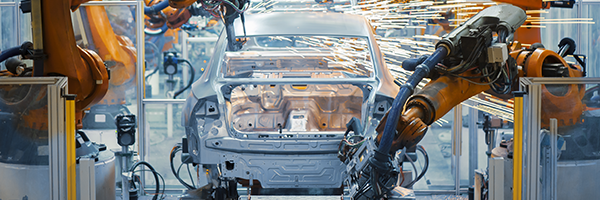Morning Briefing

February 11, 2022 | COP, Daily JAM, EQNR, Jubak Picks, LNG, Morning Briefing, PXD, Volatility |
International benchmark Brent crude jumped as much as 4.7% to $95 a barrel for the first time since 2014. Brent was up 23.68% and trading at $94.77 at 3 p.m. New York time Friday. U.S. benchmark West Texas Intermediate, which normally trades below Brent in price, was up 4% to $93.50 a barrel at 3 p.m. in New York.

February 10, 2022 | Daily JAM, Morning Briefing |
CPI inflation climbed at a 7.5% annual rate in January, the Bureau of Labor Statistics reported this morning. That was above the 7.3% expected by economists surveyed by Bloomberg and a big jump from the 7.0% annual rate reported in December. The inflation number just about guarantees that the Federal Reserve will raise its short-term benchmark interest rates at its March 16 meeting from the current 0% to 0.25% range.

February 9, 2022 | Daily JAM, Morning Briefing |
Tomorrow, January 10, before the market open, the Bureau of Labor Statistics will announce the Consumer Price Index inflation for January. Right now economists surveyed by Bloomberg are expecting an annualized increase of 7.2% in inflation. That would be a significant increase from the 7% CPI inflation rate in December and the highest inflation reading since 1982.

February 8, 2022 | BABA, Daily JAM, FXI, JD, Morning Briefing, Perfect Five-ETFs, TCEHY, Top 50 Stocks |
With the end of the Lunar New Year holiday and the reopening of China’s stock markets, China’s state-backed investment funds have started buying shares of the Chinese stocks traded on U.S. markets. The move follows actions by the People’s Bank of China to inject cash into the economy and financial markets.

February 7, 2022 | Daily JAM, Morning Briefing |
The Independent Commodity Intelligence Services published its supply/demand outlook for liquified natural gas today, Monday, February 7. The conclusion: Higher supply deficits for 2022 despite the addition of 24 million tons of LNG capacity in 2021. ICIS projects that supplies will increase by just 5.3 million tons in 2022. Demand is forecast to increase by 13.8 million tons.

February 4, 2022 | Daily JAM, Morning Briefing |
The U.S. economy added 467,000 jobs in January. The official unemployment rate ticked up slightly to 4% from 3.9% in December, as more people moved off the sidelines to enter the labor market. Over the past 12 months, the United States has added nearly 7 million jobs.

February 2, 2022 | Daily JAM, Morning Briefing |
The Standard & Poor’s 500 gained 0.94% today, February 2. The Dow Jones Industrial Average closed up 0.63%. The NASDAQ Composite finished higher by 0.50%. Only the small cap Russell 2000 pointed down with a los of 1.03% on the day. Not that different from yesterday, February 1. On Tuesday the S&P 500 was up 0.69% and the Dow gained 0.78%. The NASDAQ Composite was ahead 0.75%. That day the Russell 2000 joined in the fun with a gain of 1.09% at the close. But if you looked at what stocks moved each day, the two sessions were extremely different.

February 2, 2022 | Daily JAM, Morning Briefing |
It is enough to make financial markets nervous this morning. This morning, the ADP Research Institute report on private company jobs showed a big decline of 301,000 jobs in January. Economist surveyed by Bloomberg were looking for an increase of 180,000. The drop in the ADP survey is the first in more than year.

January 31, 2022 | Daily JAM, Morning Briefing |
Output from China’s manufacturing sector slowed to its weakest in almost two years in January, according to the Caixin/Markit Purchasing Managers Index. The index dropped to 49.1 in January from 50.9 in December. In the index a reading below 50 indicates that output is contracting rather than expanding. The January level is the weakest since February 2020 when much of the country was on lockdown during the first wave of the Covid-19 virus.

January 28, 2022 | Daily JAM, Morning Briefing |
Nothing new here in a way. The Personal Consumption Expenditure index, the inflation measure preferred by the Federal Reserve, jumped to an annualized 5.8% rate in December. That confirms the message from the 7% annualized increase in the Consumer Price Index reported earlier for December. The increase was the highest for the PCE index since 981. The December jump in the CPI was the largest since 1982. Either way you measure it, inflation is running at levels that the signaled interest rate increases in March just about inevitble.

January 26, 2022 | Daily JAM, Morning Briefing |
The Bureau of Economic Analysis is set to release its first estimate of fourth-quarter GDP on Thursday before the market opens. Economists surveyed by Bloomberg are expecting that annualized GDP growth in the quarter rose by 5.5%. That would be a huge increase from the 2.3% rate reported for the third quarter.

January 26, 2022 | Daily JAM, Morning Briefing |
Today, January 26, in its post Open Market Committee press release the Federal Reserve said it would “soon” be appropriate to raise interest rates, as inflation runs above policymakers’ preferred target and the job market strengthens. The Fed left interest rates unchanged with the benchmark at 0% to 0.25%. The Fed also left its schedule in place to end its bond buying program in March. And promised to shrink its balance sheet holdings (most probably by not replacing bonds in its portfolio when they mature) “in a predictable manner.”













